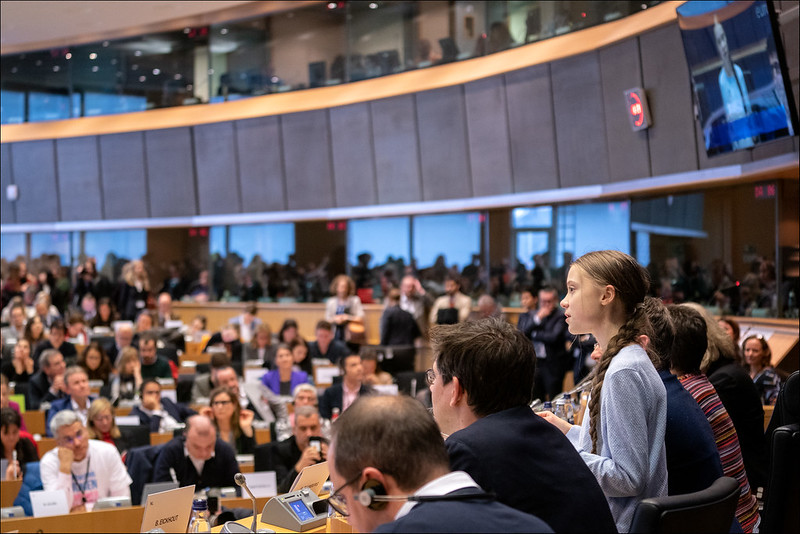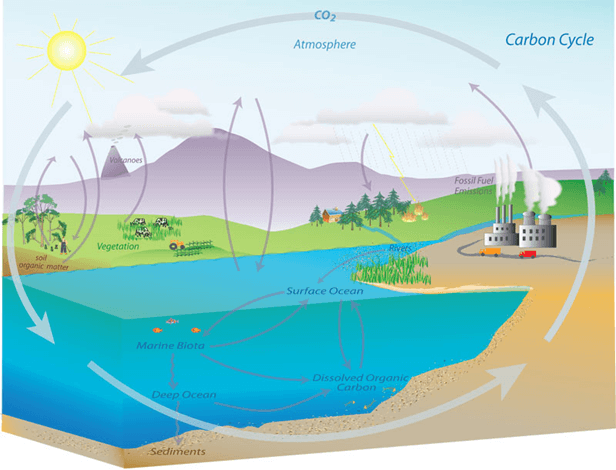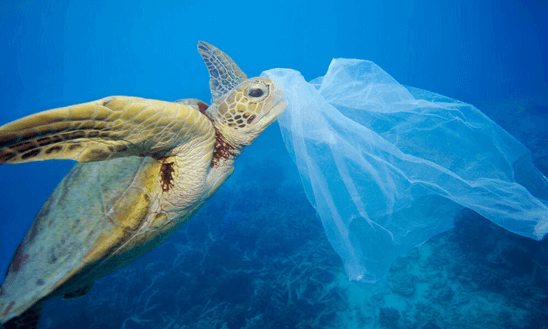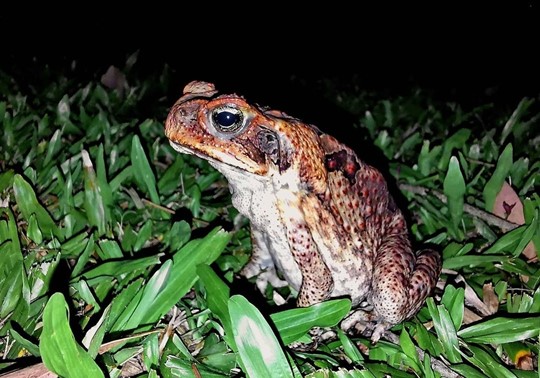Margate Primary 2AH

Hello hello Margate Primary Grade 2s!
Thank you for your questions about climate change. You asked some really interesting questions about beginning of climate change, impacts of climate change, and what we can be doing.
You'll find answers to your questions from our climate experts below - have a read and watch their answers.
You can also have a look at what other classes across Tasmania asked this year, as well as our climate change toolkit.
Our Questions
This is an excellent question, and one of the questions most students want an answer to. You can be someone who takes climate action!
Each of us can act individually (on our own) and collectively (together with others) to act on climate. We know, from scientific evidence, that climate change cannot be stopped and is happening already – but it can be reduced and slowed down. People today and into the future (including you) can make changes and decisions that will greatly reduce climate change and its impacts.
Some of these decisions are happening on a systemic scale - they the really big changes we need to reduce emissions from industries and electricity generation.
For example, world leaders are meeting together at COP26 (which is the UN Climate Change Conference of the Parties) to discuss pathways to do this – in particular, to ensure that global temperature rises do not exceed 1.5 degrees, and how we can adapt to climate change impacts into the future. If we can manage to greatly reduce global greenhouse gas emissions (such as carbon dioxide) we can limit climate change.
You might wonder how young people can influence big changes like this? By using your voices! Young people are involved in many groups and movements such as the School Strikes for Climate that have already made a difference to the way world leaders think about climate action.

At a smaller scale, all of us can do something to make positive changes and have an impact on tackling climate change. Some people can do more and less than others, and that is OK - it’s great actually because lots of small changes can lead to big impact. In everyday life, there’s lot that you might be able to do, for example:
- You can aim to take the bus or walk, or ride your bike to school more.
- You could eat more vegetables, and eat meat less often (maybe even encourage your family and friends to have ‘meat free Mondays’?!). Plant-based foods generally produce fewer greenhouse gas emissions and they also require less energy, land, and water usage.
- You can speak up! Tell your friends and family about climate change and the small changes each of us can do to make a difference - remembering that we all have different abilities to make these changes, big and small.
There are a lot more ideas you can check out on our 'What can I do?' page.
This is a really good question! Unfortunately, I do not have the solution to stop wars and bombing... However, it is true that wars produce a lot of pollution, and there are a couple of rules that countries must respect to protect the environment during war time.
One rule prohibits countries at war to damage the natural environment, especially if the damage is expected to be serious. This is because people rely on the environment to survive and be healthy (for food, water, and shelter for instance). Another rule prohibits countries at war from setting forests and other vegetation on fire, to protect plants, animals, and their habitats (where animals live).
Another important rule prohibits countries to use environmental modification for military purposes. This means that countries cannot modify the environment to cause damage to their enemy (by provoking floods, for instance).
All these rules are quite old, and they were agreed on when the protection of the environment was not such an important issue. Now that we know that wars produce a lot of pollution, it may be time for countries to think about updating these rules.
This is a great question and a really important one, because if we can understand what the main threats of climate change are, we can do something about them! The first thing to understand is that we are talking about anthropogenic climate change. This refers to climatic changes caused by human activities (anthropocentric meaning human). Climate change is ultimately caused by releasing greenhouse gases into the atmosphere which contributes to global warming. You can find some great information about greenhouse gases, global warming and their relationship with climate change from Dr Beth Fulton and Deniz Yildiz.
Threats are, therefore, activities that contribute greenhouse gases to the atmosphere. The biggest threat and production of greenhouse gas emissions is our use of fossil fuels. Fossil fuels are hydrocarbon-containing materials, such as coal, petrol and natural gas, formed underground from the remains of dead plants and animals a long, long time ago that humans extract to use for things like generating electricity, driving cars and machinery.
Another major threat is deforestation which is the cutting down and often burning of forests, such as the Amazon rainforest, and also forests here in Tasmania.

Intensive agriculture contributes significantly to the release of greenhouse gases to the atmosphere as well. Cows and sheep produce large amounts of methane (a greenhouse gas) when they digest their food, and this gas adds to the greenhouse effect on the Earth. Furthermore, animals need fields to graze on, and this leads to deforestation.
The use of nitrogen fertilisers to support intensive agriculture is another contributor to climate change because they produce nitrous oxide emissions.
Last, but by no means least, fluorinated gases contribute to greenhouse gas emissions. These particularly damaging gases are emitted from equipment and products such as commercial and industrial refrigerators, air-conditioning systems and heat pumps. Such emissions have a very strong warming effect, up to 23,000 times greater than that of carbon dioxide.
What is important to remember though is that there is great work being done to combat ALL of these threats.
Great question! Greta Thunberg started learning about climate change at school when she was just eight years old and her class watched documentaries about climate change. What she learnt stuck with her, and she became worried about the future and frustrated that people in power were not doing enough about it. When she was very young, she started making more sustainable choices in her life, including not eating meat or travelling by airplane.
Greta has Asperger's syndrome, which is a condition on the autism spectrum, and she now talks about it as her superpower as a climate activist. From a very young age, she had a strong sense of what was right and wrong, and knew that if we were going to save the planet, humans have to act now.
It was this sense of right and wrong about the environment, and her anger at world leaders ignoring the climate crisis, that led her to start protesting, starting with the Swedish government. In August 2018, when she was 15 years old, she didn't go to school and sat down outside the Swedish Parliament with a sign that read 'School Strike for Climate' and some information about climate change. She posted about her strike on social media, and slowly but surely, people came to join her in Sweden, and then around the world.
Greta now is a fierce climate activist and continues to fight for climate action and climate justice. One of the best things about her story is that she did not start out trying to become famous or start a worldwide movement, but instead she chose something that she could do in her own life. Just by taking a small action, she inspired other people to take action too. Anybody can be a Greta, just start small and stick with it!

This is a complex question. It is the sort of question we love to answer in science! But it is also a question that, when answering, can cause uncomfortable emotions. Before I go into this, I want to emphasise that I am genuinely optimistic about the future. As a species, our actions have changed the world, and will continue to change the world for some time. However, we are currently aware of the problems and there is an enormous movement of people working towards solutions.
In my branch of science – ecology (which is the study of interactions between living things and their physical surroundings) – the word environment describes any area in which an organism (or living thing) exists. Broadly, when a group of organisms rely on each other for survival and are dependent on particular environmental features, we call it an ecosystem. To clarify your question, environments change, but ecosystems die. We know why some of our ecosystems are dying, and I will try to outline some of the key causes below.
1: Greenhouse gas emissions and the deforestation of old growth forests.
Arguably more than any other cause, our emission of greenhouse gases drives shifts in our climate. They are called greenhouse gases because, in large quantities, they cause the planet to warm like a greenhouse.
Almost everything in nature endures when balanced. To paint a picture of global cycles, you can think of everything that releases gas as a pair of human lungs, and everything that stores gas as a tree. You know how when you breathe, you inhale oxygen, and then exhale carbon dioxide – but at the same time trees inhale carbon dioxide and exhale oxygen? Well, to an extent, the same balance exists in nature: There are things that naturally exhale greenhouse gases – such as volcanoes, bushfires, and animals (these can be thought of as the human lungs in our example). There are also things that naturally inhale greenhouse gases – such as plants, algae, and fungi (these can be thought of as the tree in our example). Normally, these things tend to balance each other, with the lungs breathing as much as the tree.
However, over the past century, humans have greatly reduced the number of trees on our planet, and artificially increased the amount of gas being released. This has destroyed the balance. What I mean by this is, where our example lungs used to contain gases only from natural sources (volcanoes, bushfires, animals, etc.), it now contains gases from sources that would never have been part of the global cycle. This is because these gases are released from the burning of fossil fuels – oil and other substances that are naturally locked deep underground. By digging these underground features out of the earth and burning them, we release more gas than our example tree (plants, algae, and fungi) is able to breathe. If the tree can’t breathe these gases in time, they get stuck in our atmosphere and cause greenhouse warming – heating the planet and disrupting every type of ecosystem.

2: Pollution
Environmental pollution exists in many forms, including chemical, pharmaceutical, and atmospheric. But the form that most people are familiar with, is plastic pollution. Plastic is an incredibly useful material, and that means that it is present in many of our household items. Unfortunately, plastic takes an enormous amount of time to break down in nature (I talk about this in another answer on the Curious Climate website: https://curiousclimate.org.au/schools_experts/benjamin-viola/).
One thing I didn’t talk about however, was that large pieces of plastic can look like prey items to animals. When they eat this plastic, it can get stuck in their bodies and potentially cause lethal harm. Animals are a crucial part of healthy ecosystems, and if too many animals die, it can have compounding flow on effects that alter entire ecosystems. For more information on this, check out the trophic cascades page on Wikipedia (I know it isn’t recommended to use Wikipedia for homework, but we all do…): https://en.wikipedia.org/wiki/Trophic_cascade

3: Invasive species
With colonisation, seafarers from around the world brought plants and animals from their land to other countries. These plants and animals (referred to as exotics) sometimes escaped and established feral populations. Feral species have an enormous impact on local ecosystems as they disrupt cycles that have established over thousands of years. For instance, the introduction of Cane Toads in Australia has pushed many native species towards the brink of extinction.
Cane Toads were introduced with the intention of protecting sugar cane crops from Cane Beetles. It was thought that Cane Toads would eat the Cane Beetles, and the crops would benefit from fewer Cane Beetles consuming sugar cane. Unfortunately, the Cane Toad didn’t eat the Cane Beetles, and given that the toads are toxic at all stages of their life cycle, many Australian species that consume Cane Toads die.
For example, the Northern Quoll was once widespread in Northern Australia, but since the introduction of the Cane Toad, it is now an endangered species. Cane Toads continue to spread throughout Australia. They aren’t able to survive in colder areas, but as the climate warms, they are capable of expanding to increasingly more regions. You can read more about this species and its impacts from a number of sources, but the New South Wales government has a great webpage on them.

Most of the methane that cows produce comes from burps, rather than farts. Cows fart (and burp) because they have to digest grass, which is quite hard to break down. Did you know cows have four different stomachs? And they chew their food twice? Imagine if you had four stomachs! You would probably fart and burp more too. Seaweed can be added to a cow’s diet to help reduce the amount a cow farts and burps. They are still looking into why this is and how to maximise these results, but it is very promising, as they have found that cows who eat seaweed burp and fart around 80% less.
Burps and farts produce methane which is a potent greenhouse gas. It makes climate change because it absorbs the light from the sun and so traps the heat in our atmosphere, creating the warming that contributes to climate change.














